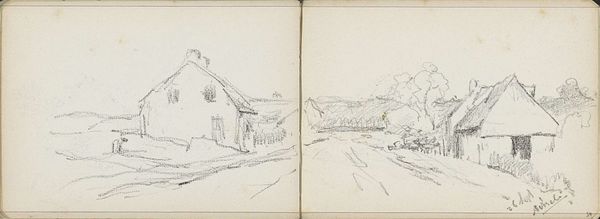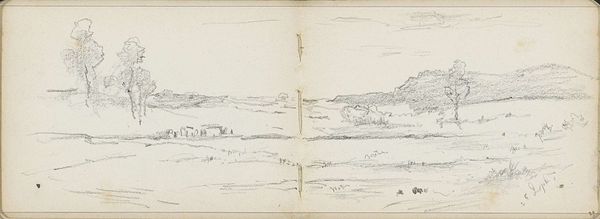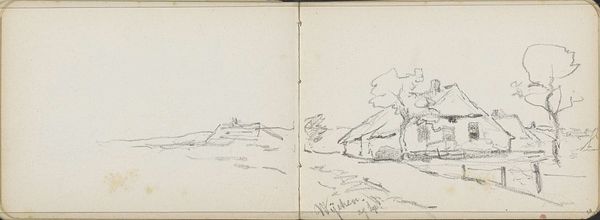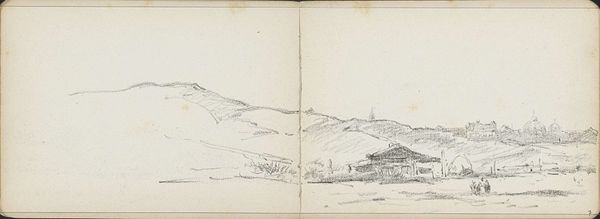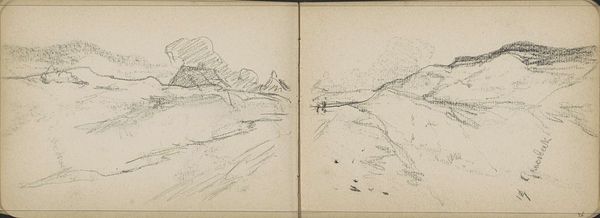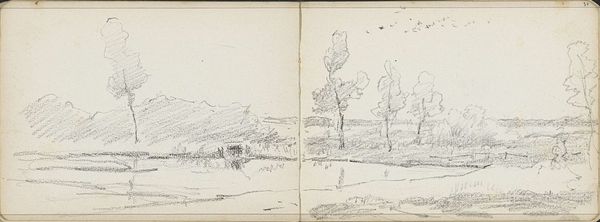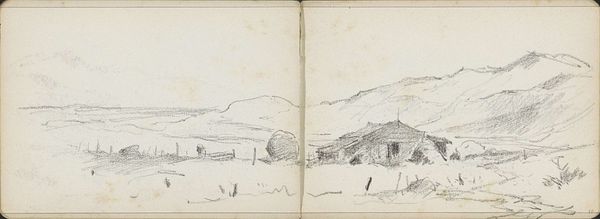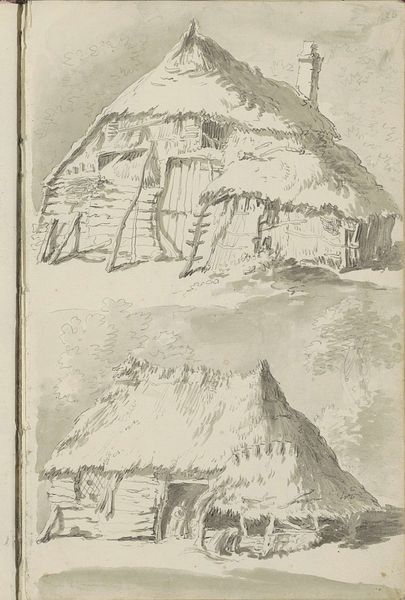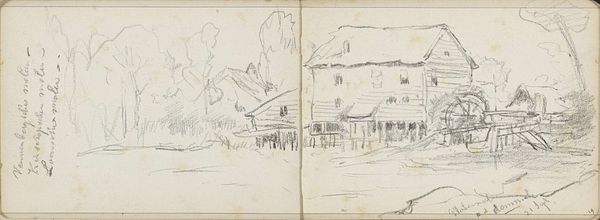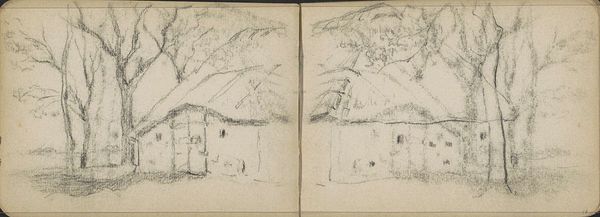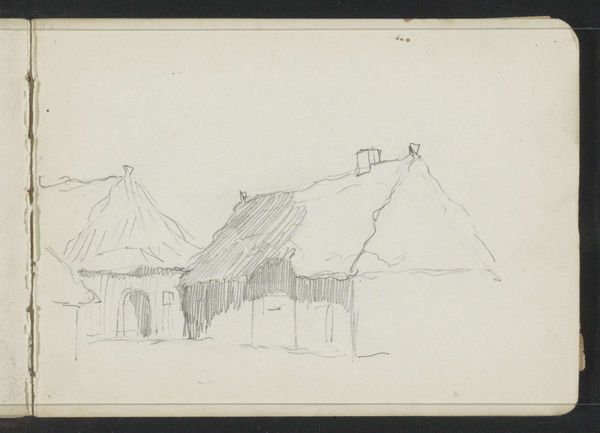
drawing, pencil
#
drawing
#
light pencil work
#
pen sketch
#
sketch book
#
landscape
#
personal sketchbook
#
sketchwork
#
ink drawing experimentation
#
pen-ink sketch
#
pencil
#
pen work
#
sketchbook drawing
#
sketchbook art
#
realism
Dimensions: height 113 mm, width 159 mm
Copyright: Rijks Museum: Open Domain
Editor: So, this is Willem Cornelis Rip's "Boerderij te Groesbeek," a drawing in pencil, likely from around 1896-1898. It’s quite delicate, a sketch in what looks like a personal sketchbook. What do you see in this piece that I might be missing? Curator: Well, immediately, I see a dialogue between observation and documentation. Rip isn't just recording a landscape; he's capturing a way of life rooted in the Groesbeek region. The farm isn't merely a structure; it's evidence of a community's relationship with the land. Notice how the thatched roof seems almost to blend into the surrounding environment. What does that say about the people who inhabit this space, about their place in society? Editor: That's interesting, the way the farm blends in. I was focusing more on the sketch-like quality, as if it's a fleeting impression. Curator: Precisely! But consider this: the immediacy of the sketch is, in itself, a political statement. It suggests a desire to capture the ephemeral nature of rural life, possibly in the face of encroaching industrialization and urbanization. What is Rip trying to preserve, not just visually but culturally? Editor: So, the act of sketching becomes an act of resistance, or at least, remembrance? I guess I was missing that layer. I was caught up in the simplicity of the lines. Curator: The simplicity is deceptive. Think about who had the luxury of creating such images. How does Rip's position as an artist influence his perspective on this rural setting? Is he an outsider looking in, or does he have a deeper connection to this community? These are important questions to consider when interpreting this work. Editor: Wow, that really changes how I see it. I thought it was just a pretty landscape. Curator: Art is never "just" anything. It's a product of its time, reflecting and shaping the social and political landscape. Editor: I’ll definitely be looking at sketches differently now! Curator: And I'll remember to appreciate the aesthetic value, not just the theoretical implications. It's a constant negotiation, isn't it?
Comments
No comments
Be the first to comment and join the conversation on the ultimate creative platform.
